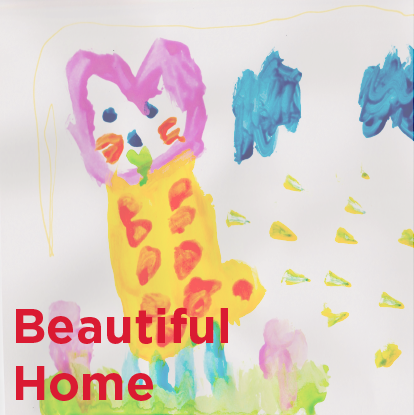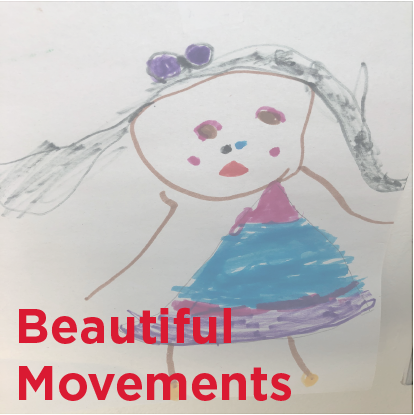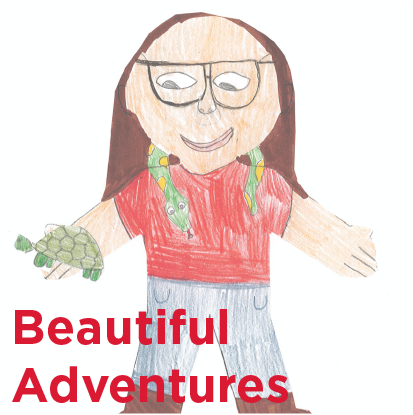Shared Storybook Readings
I Really Like Slop Read Aloud
Length - 2:38; for children 2+ years
Join Aliza, Mira, and Matt as they read, "I Really Like Slop!" by Mo Willems. Notice how Aliza and Mira have lots of fun reading the book. Matt asks questions and engages Aliza and Mira by slowing down, asking questions, and letting them read along with him.
The Little Red Fort Read Aloud
Length - 8:42; for children 2-8 years
In this story, Ruby is inspired to build a fort and asks her brothers for help. Each of her brothers tell Ruby, "No", which in turn, reveals her persistence and determination to create a fort on her own. Ruby shows that if you put your mind to something, you can do anything and that if you are kind and helpful to others, others will be kind and helpful to you, too!
Noisy Truck Read Aloud with Leo
Length - 2:46; for infants to age 8 years
Big Trucks make loud noises! Listen and look at the pictures while Leo reads about big trucks and the noises they make. What noise is your favorite? Which truck do you think has the biggest tires?
Giraffes Can't Dance
Length - 7:47; for children aged 2-8 years
This great children’s book talks about finding courage to do something we don’t think we can do. Gerald doesn’t think he can dance. It just takes one friend to encourage him and give him confidence to dance! All of us need to find a friend that can give us a pep talk!
I Like Myself by Karen Beaumont
Length - 6:28; for children aged 2-8 years
Teacher Mismiki reads one of her favorite stories about a unique little girl who is so happy to be who she is! She knows that she is different in the way she looks, in the way she feels inside, the ways she likes to play, and even admits that sometime she can be super different that she gets called a "silly nut," or a "crazy cuckoo bird!" But, because this young girl has learned how important it is to like herself for who she is, she doesn't let what others call her or think about her bother her! Teacher Miki then shares what it is that she likes about herself that is different than most others, and explains that being different is very important! What is it that you like about yourself? After listening to the story, write or draw what makes you like yourself the most!
Please, Mr. Panda Dramatic Play
Length - 6:44; for children aged 2-8 years
Your children’s story books make a great invitation for children to be creative and express themselves through using drama! Choose a favorite book from your children’s book collection. First read the book together then after you read the book make the invitation to act out the book using materials from your home. Gather stuffed animals, look through clothes to match the characters from the book the follow the child’s lead! As the adult get really into the acting, be silly, have fun, use silly voices—this will make the child that much more interested in acting out the book!
Maybe Something Beautiful Read Aloud
Length - 6:10; for children aged 3-10 years
This story is about a young girl, Mira, who noticed that her neighborhood was dark and grey. She was inspired to create brightly colored murals around her neighborhood to spread joy in her community. Just like Mira, we can use art as a form of expression to connect with others. I encourage you to think of special ways to spread joy and happiness around your neighborhood and community to enhance its beauty and create beautiful days for others!
Storytime with Teacher Morgan
Length - 2:18; for children aged 3-8 years
Listen to Teacher Morgan read “The Very Hungry Caterpillar” The caterpillar eats lots of different foods just like children and families do at meal times! Teacher Morgan also provides an activity to do with your children to chart meal time foods that you eat throughout the week.
Storytime: Exploring Emotions
Length - 3:25; for children aged 18 months to 8 years
The Way I Feel written and illustrated by Janan Cain is a book about different strong emotions that can be felt. By reading this book with your toddler, you are able to help them explore these different feelings and emotions that they are beginning to recognize. This book also helps you to provide them with the right tools and strategies to help regulate their feelings and emotions with your support or on their own as they develop.
Reading the Very Hungry Caterpillar to Friends
Length - 3:19; for children aged 4-8 years
Mark reads The Very Hungry Caterpillar to his stuffed animal friends. For this activity grab your favorite stuffed animal, a blanket, your favorite book and snack, and a “snack” for your stuffed animal too. Resources or Activities mentioned in the video Reading to your stuffed animal; Materials: Blanket, book, stuffed animal, and pretend playfood.
Reading with Infants and Toddlers
Length - 3:44; for children aged infant to 3 years
It’s never to early to start reading with your infants and toddlers! Here are some simple suggestions for types of books for your youngest readers and how to connect with your child during reading time.
Storytime with Molly
Length - 2:46; for children aged infant to 3 years
Sharing books with your toddler helps them develop the language skills and vocabulary they’ll need to be a good a reader later on. Children’s books introduce kids to new and unusual words that you might not use in everyday conversation at home. Watch Molly read her favorite books and demonstrate her language and vocabulary skills. Also listen for some tips for reading to toddlers!
Baby Monkey
Length - 6:37; for children ages 3-5 years
Baby Monkey is a beloved tale in the 3-5 year old room at Ruth Staples Child Development, East Campus UNL. The children know the story by heart and know how to solve each case by helping Baby Monkey look for clues with magnifying glasses, take notes with paper and pencil, and eat a snack! Get a magnifying glass, paper and pencil, and a snack ready to read the first chapter of this incredible story by Brian Selznick and David Serlin.
Let's Read 'A Beautiful Stick'
Length - 2:32; for children ages 2+
Reading aloud to children is a great way to spend quality time together. Often, what we read will come alive as children sing, dance, sculpt, draw, and act out what they are learning. Not A Stick, by Antoinette Portis, provides the readers (and listeners) permission to be creative...it’s not a stick...it’s a ____! Sticks are a great example of a “loose part." A loose part is simply something that does not come with instructions on how to use it. Soon after reading this book you will see “It’s not a ____” possibilities everywhere, and the fun will continue even if you do not have a stick! Look at the clouds, knots in pieces of wood, find shapes in rocks (like hearts). Find other loose parts and encourage your child to make something out of those parts. Examples of loose parts include rocks, buttons, beads, shells, leaves, container lids, etc.!.
Calm-Down
Length - 2:45; for children 9 months to 3 years
Calm-Down Time is a story that provides different strategies and techniques for adults to use to help children calm down after feeling strong emotions (e.g. sadness, frustration). These strategies can be helpful when working through challenging situations and processing the different emotions that children can experience.
Bubblegum Song
Length - 3:11; for children 3-5 years
One way to help children feel a strong connection to their caregiver is by singing together! You will notice that children might start requesting certain favorite songs often throughout your time together. This song is sung quite often with the 3-5 year olds at Ruth Staples Child Development Lab because it is requested by the children and it is very useful for transitions or just silly relationship-building times!
Interrupting Chicken
Length - 5:29; for children 2+ years
Listening to stories provides a number of cognitive benefits. Getting your children actively involved in reading stories aloud can strengthen children's visualization, comprehension, and vocabulary. And, even more importantly, snuggling up with a good book provides security and emotional support. Get together and read a story--develop character voices, create sound effects, make connections, or share a laugh. Don't be afraid of interruptions, your child's connections and questions are powerful opportunities to make the story even more meaningful. Get more ideas for reading aloud here!
And learn more about how to use books to support young children’s coping and understanding of their emotions with storybooks when they experience stress and/or trauma here
Grumpy Monkey
Length - 7:10; for children 3-6 years
There are many benefits of reading aloud to children. Caregivers who read to children at home at least three times per week have children who are likely to score in the top 25% of reading scores compared to children who are read to less often.
Reading aloud promotes children developing new words, developing language skills, growing their reading comprehension and it can help them think and talk about their own feelings and experiences as they relate to characters in the book.
When engaging in shared storybook reading it can be helpful to: 1) ask children open-ended questions 2) actively engage children in the story, and 2) ask children to make predictions. Watch Savannah and her dad read Grumpy Monkey and see how he uses some of these strategies. Learn more about reading storybooks aloud here!
And learn more about how to use books to support young children’s coping and understanding of their emotions with storybooks when they experience stress and/or trauma here




